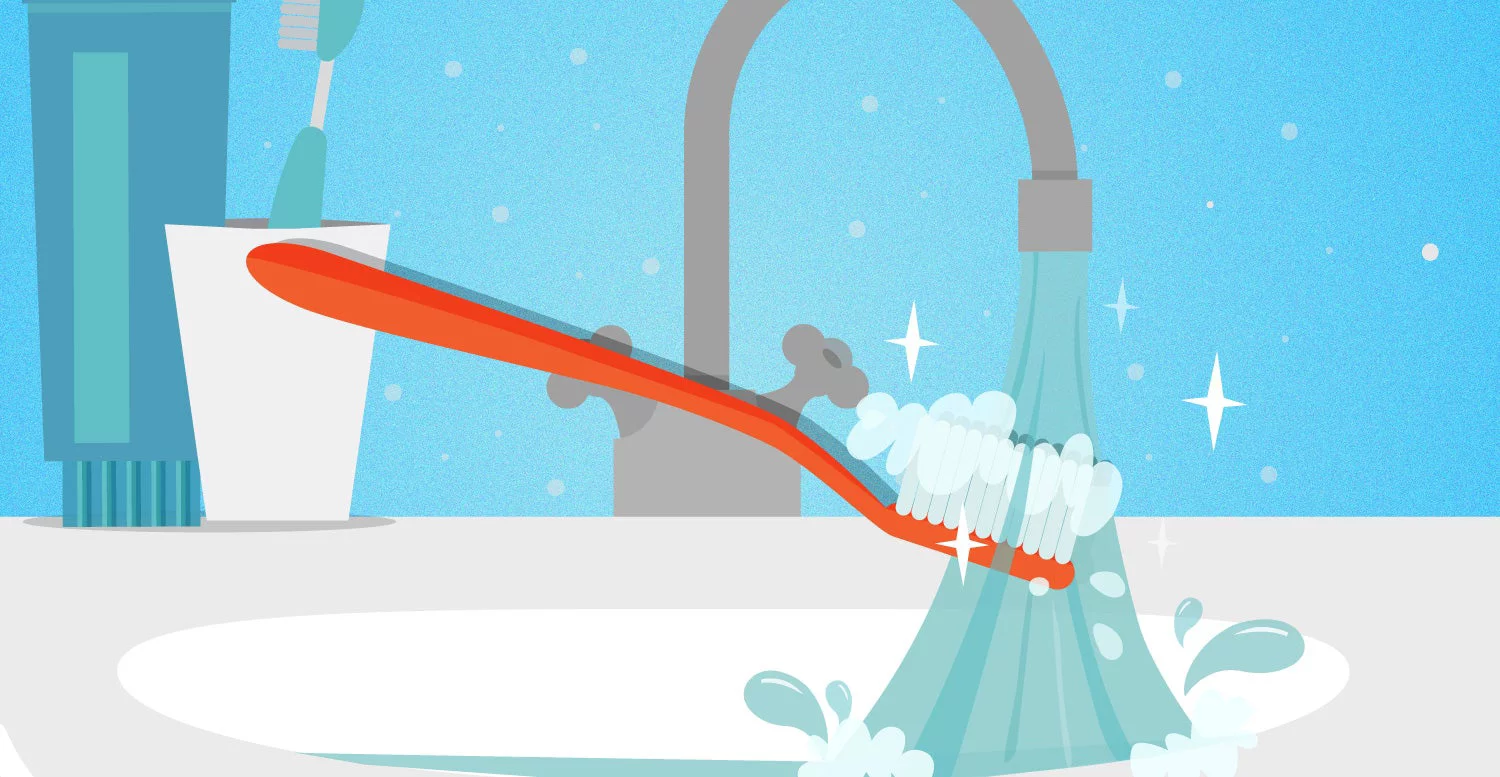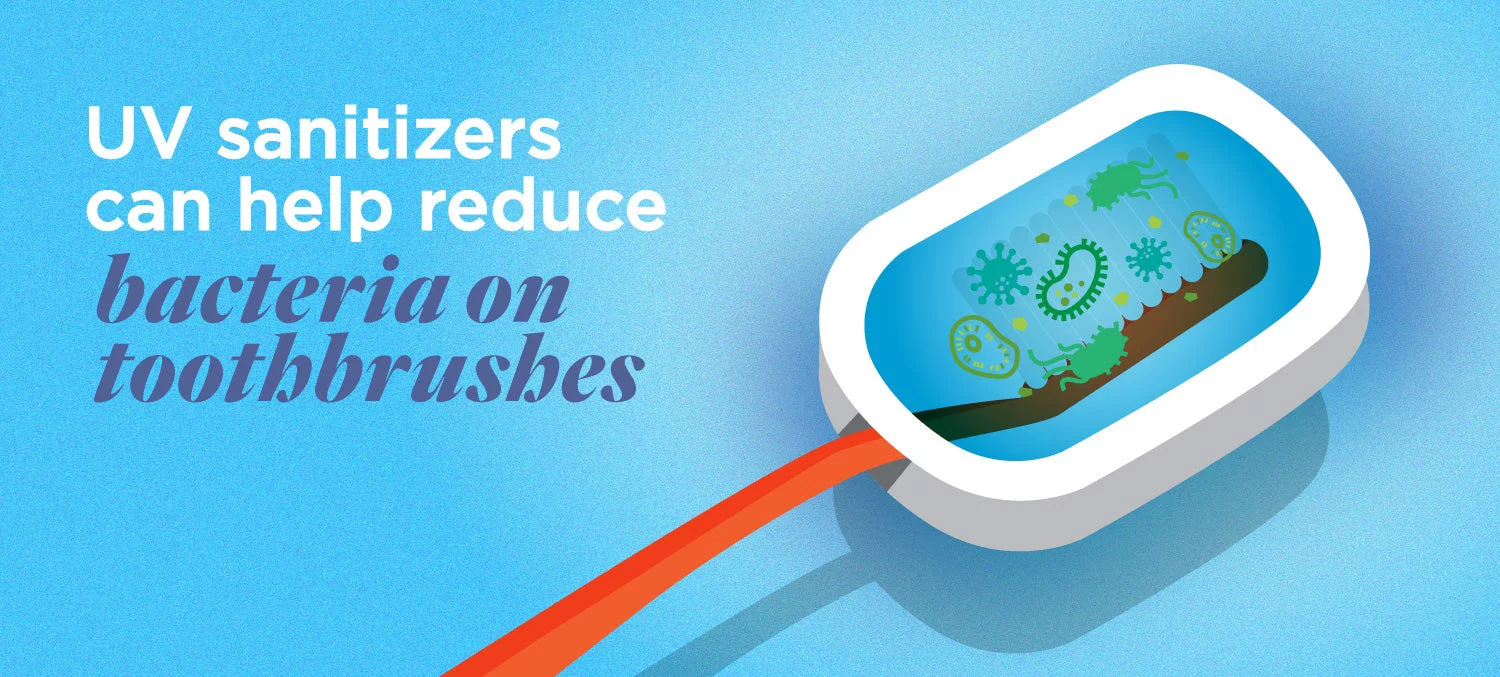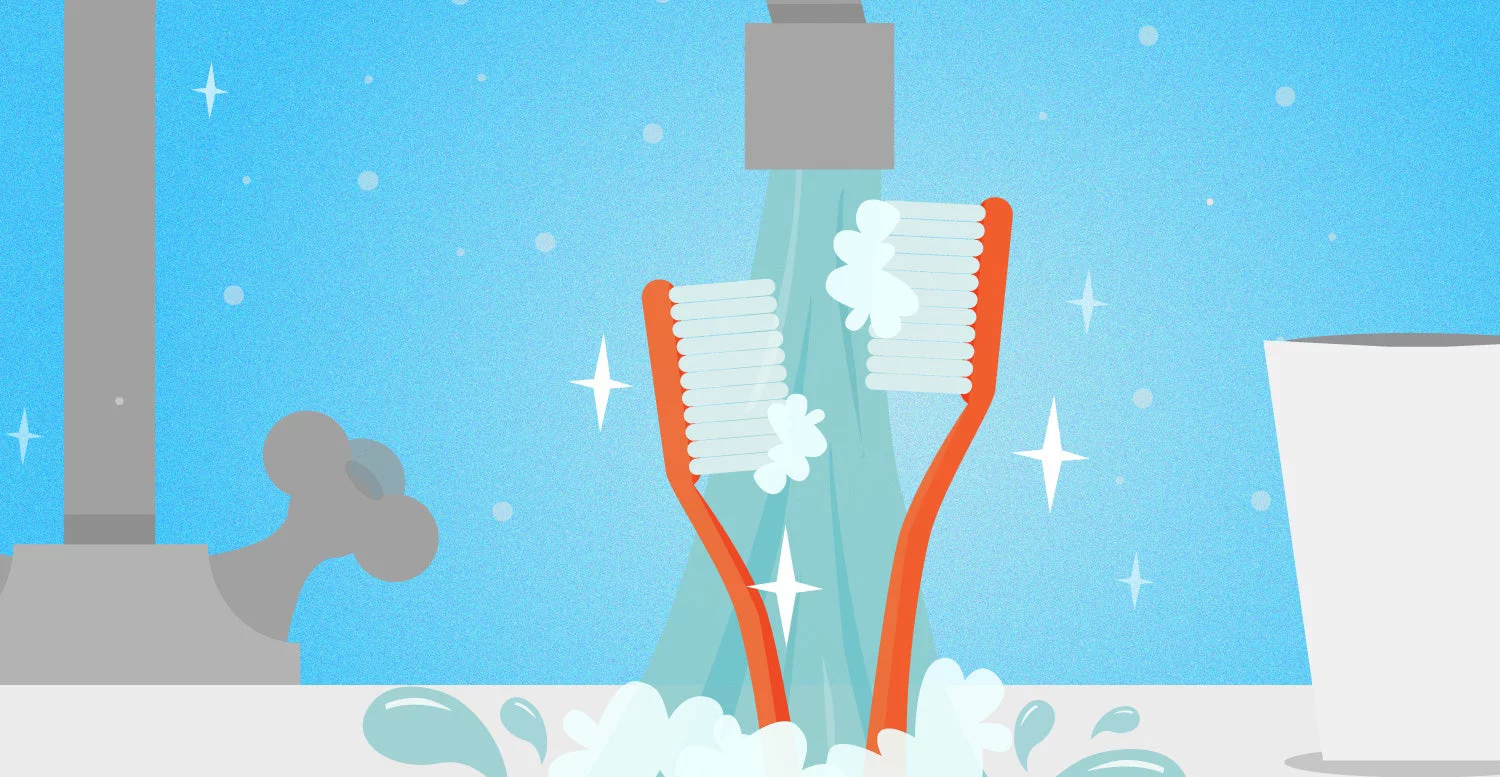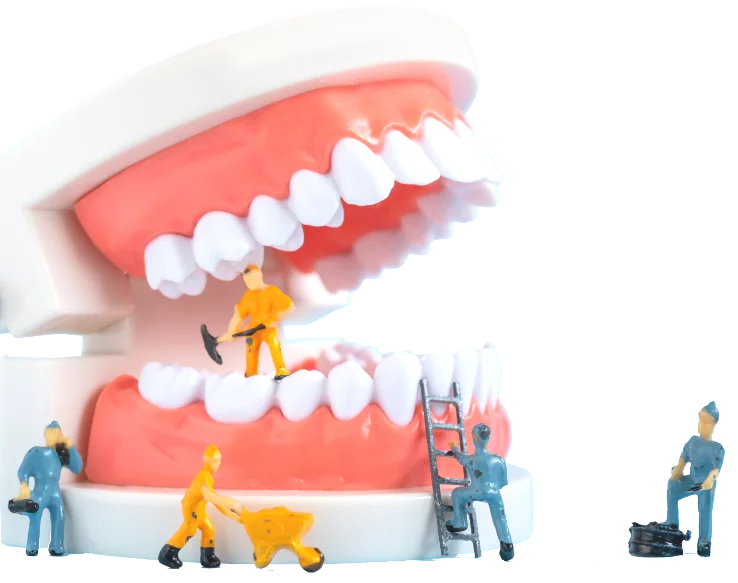Your toothbrush is a powerful tool that you use daily to keep your mouth clean. Brushing your teeth twice a day can prevent oral complications like tooth decay and gum disease.
How to Clean Your Toothbrush

Fecal matter, staphylococci, intestinal bacteria, and a whole host of other types of micro-bacterial colonies have been found living on toothbrushes. Sanitizing your toothbrush regularly cuts down on the number of germs hanging around your toothbrush and can also make you feel better about the cleanliness of this important oral hygiene tool.
Hot Water
Running your toothbrush under the hot tap is an easy way to loosen and remove oils and food debris that can harbor bacteria. Let the hot water run until steaming then stick your toothbrush under the running water to thoroughly rinse it of any toothpaste or food particles. Do this before and after you brush your teeth to reduce the bacterial population even further.
Antibacterial Mouthwash
The antibacterial mouthwash you have in the cabinet can also be used to kill bacteria on your toothbrush. Once a week, soaking your toothbrush for about 20 minutes in a mixture of half a cup of water and one teaspoon of mouthwash greatly reduces the number of bacteria living between the bristles.
Denture Cleaner
If you wear dentures, you probably have extra denture cleaner lying around. Sticking your toothbrush bristle-side down in a half cup of water with half of a dissolved cleaner tablet once a week can reduce whatever is growing and thriving on your toothbrush.
Hydrogen Peroxide
Hydrogen peroxide is an anti-septic solution that can be used to eliminate bacteria found on your toothbrush — it's an easy, inexpensive way to sanitize your toothbrush. Mix in about one teaspoon of hydrogen peroxide in a cup of water and soak your toothbrush in the solution. Storing your toothbrush, bristles side down, in this solution will keep your toothbrush clean but be sure to change out the solution every day.
Best Practices for Maintaining a Clean Toothbrush
Washing Your Hands
Storing Your Toothbrush Properly
Knowing When to Toss the Brush
After Illness
Toothbrushes Are Not for Sharing
Alternative Toothbrush Cleaning Methods
UV Sanitizer

Some promising evidence shows that UV sanitizers are more effective at reducing bacteria on toothbrushes than soaking them in a chlorhexidine gluconate solution. However the CDC suggests that UV sanitizers may actually damage your toothbrush in the process and are generally unnecessary for sanitizing a toothbrush.
Dishwasher
However, some dishwashers get hotter than others. Because a high heat setting can damage your toothbrush, the American Dental Association does not recommend cleaning your toothbrush with a dishwasher.
- Never wash it with dirty dishes
- Do not use detergent
- Be ready to replace your toothbrush if it gets damaged
- Add a half cup of vinegar for an added anti-microbial performance
Additional Tips for Maintaining Good Oral Health
Brush Your Teeth
Floss Daily
Eat a Well Balanced Diet
Schedule Regular Checkups with Your Dentist
A dentist checks that your mouth is getting the daily attention it needs. If there are tartar or early signs of gum disease, your dentist will identify these issues and begin treating your mouth. Your dentist can also recommend which toothbrush is best for you.
The Type of Toothbrush and Toothpaste You Use Matter
According to the American Dental Association, a toothbrush with multi-level bristles does a better job of cleaning your teeth. Soft bristles also are recommended over firm bristles because they are least likely to hurt your gums.
The toothpaste you choose should have the ADA seal of approval as well as fluoride to truly protect your teeth. In addition, the higher the fluoride concentration in the toothpaste you choose, the harder the surfaces of your teeth, as seen in a 2013 study comparing toothpastes with 1,300 parts per million fluoride to 5,000 parts per million fluoride.
Finding a Dentist Near You
If you are looking for a dentist in your community to help keep you on the right track of oral health, Smile Generation can connect you with experienced and highly recommended dentists in your area. Oral hygiene works best when you are consistent. Ensuring a dentist gets a good look at your teeth at regular intervals throughout the year is as important as brushing twice daily and sanitizing your toothbrush weekly.
Find your trusted, local dentist today!
Sources
Booker, Winifred J., "A Clean Toothbrush May Help Protect You From The Flu." The Maryland's Children's Oral Health Institute, 26 Oct. 2009, http://www.mycohi.org/pdfs/A_Clean_Toothbrush.pdf
Greer, Tyler, "Clean Before You Clean — What’s On Your Toothbrush Just Might Surprise You." UAB News, 6 May 2014, https://www.uab.edu/news/youcanuse/item/4622-clean-before-you-clean-what-s-on-your-toothbrush-just-might-surprise-you
Srinivasan, Murali, Martin Schimmel, Martine Riesen, Alexander Ilgner, Michael J. Wicht, Michael Warncke, Roger P. Ellwood, Ina Nitschke, Frauke Müller, Michael J. Noack, "High-fluoride Toothpaste: a Multicenter Randomized Controlled Trial in Adults." Wiley Online LIbrary, 20 Dec. 2013, https://onlinelibrary.wiley.com/doi/10.1111/cdoe.12090
Konidala, Usha, Sivakumar Nuvvula, Abinash Mohapatra, S. Nirmala "Efficacy of various disinfectants on Microbially Contaminated Toothbrushes Due to Brushing." Contemporary Clinical Dentistry, Dec. 2011, https://journals.lww.com/cocd/Fulltext/2011/02040/Efficacy_of_various_disinfectants_on_microbially.9.aspx
Lee, Seung-Geun, Bo-Ram Kang, Han-Sol Kim, Hyuk-Hyun Park, Hye-Ran Park, Seul-Ki Yoon, Seoul-Hee Nam, "Changes in the Number of Bacteria in a Toothbrush According to the Toothbrush Management Method." Allied Academies, 31 July 2017, https://www.alliedacademies.org/articles/changes-in-the-number-of-bacteria-in-a-toothbrush-according-to-the-toothbrush-management-method-8265.html
"Toothbrushes." ADA, 7 Oct. 2022, https://www.ada.org/resources/research/science-and-research-institute/oral-health-topics/toothbrushes
Tomar, Poonam, Sudheer Hongal, Vrinda Saxena, Manish Jain, Kuldeep Rana, Rahul Ganavadiya, NIH, Dec. 2014, "Evaluating Sanitization of Toothbrushes Using Ultra Violet Rays and 0.2% Chlorhexidine Solution: A Comparative Clinical Study." https://pubmed.ncbi.nlm.nih.gov/25538466/
Smile Generation blog articles are reviewed by a licensed dental professional before publishing. However, we present this information for educational purposes only with the intent to promote readers’ understanding of oral health and oral healthcare treatment options and technology. We do not intend for our blog content to substitute for professional dental care and clinical advice, diagnosis, or treatment planning provided by a licensed dental professional. Smile Generation always recommends seeking the advice of a dentist, physician, or other licensed healthcare professional for a dental or medical condition or treatment.








